In this review, I will be taking a look at the Godox LEDP260C, possibly the cheapest decent (on paper) LED panel you can purchase at this moment. While I’m at it, I will tell you what I like and dislike about this cheap video light. The Godox LEDP260C has a total of 128 3300K LEDs and 128 5600K LEDs and reaches 2200 LUX when set to daylight.
The reason for me buying this video light wasn’t just for a review. Not too long ago, I published a video in which I discussed what I wanted to achieve with my YouTube channel during the current year. One area I was seriously lacking in was lighting, and I expressed the wish to upgrade my current setup. The truth is, that I actually had already received my new light as I was recording that video.
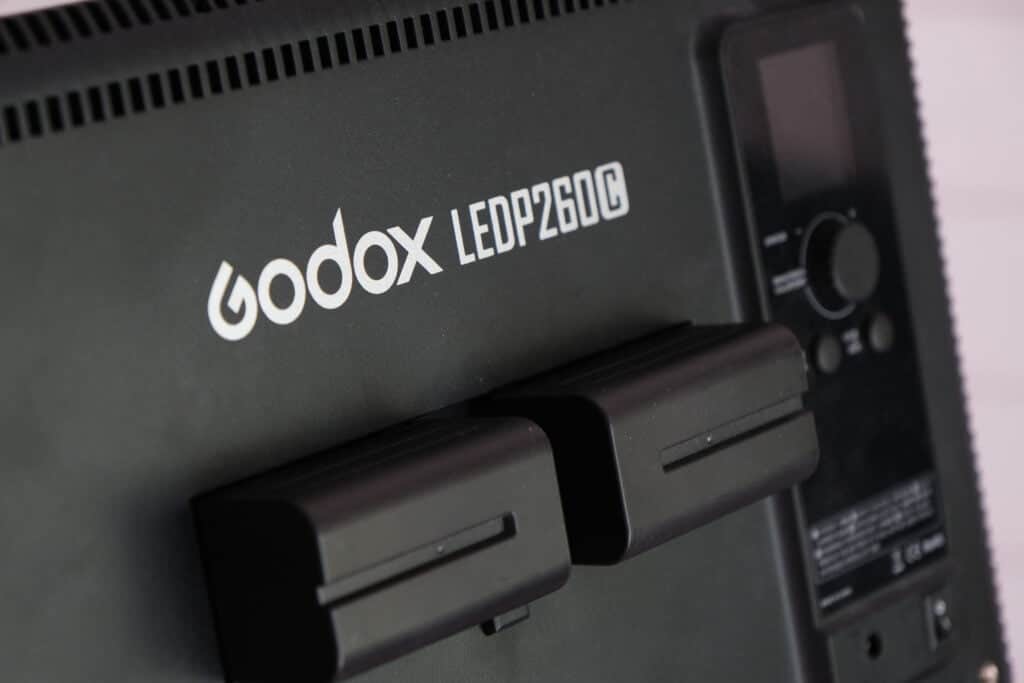
Unfortunately, I didn’t wait long enough to consider one of the new budget lights from Aputure, although, in hindsight, I do wish I would have. On the other hand, the Godox LEDP260C I now own and will review in this article was less than half the price of the Aputure Amaran 100D, and it is also much smaller.
The good
| Price | At around US$90 the Godox LEDP260C is a steal. |
| Brightness | 2200 LUX at daylight is enough for a small-time Youtuber. |
| Noise | The Godox LEDP260C requires no active cooling. |
| Power options | A wall-wart is included in the box and the panel can be powered by two Sony NP-F batteries. |
| Wheight | The Godox LEDP260C comes in at less than a kilogram. |
The bad
| Build quality | It feels cheap due to being constructed out of plastic. The acrylic diffuser is prone to scratches. |
| Noise (again) | The Godox LEDP260C creeks while warming up. |
| LEDs | A combination of warm and cold LEDs would have resulted in a higher brightness at 5600K. |
About the name Godox LEDP260C
Before I get into the actual review, I do want to address this LED panel’s name. The reason for that is because I’ve seen people online complain about it. But to me, it makes perfect sense. LEDP260C. LED because it has LEDs, which is short for light-emitting diodes, and not fluorescents or a COB LED. P because it’s a panel. 260 because it has 256 LEDs, and they’ve rounded the number. C because it’s bi-colour.
It’s that simple. For me, the name given to this Godox light makes much more sense than say Aputure Amaran AL-MX or AL-F7, where the name could literally mean anything.
Godox LEDP260C
Color Temperature Range: 3300-5600K
Colour accuracy: CRI of 95, TLCI of 94
Dimming: 10-100%
Output: Maximum of 2200 lux at 1.6′
No cold LEDs on the Godox LEDP260C
The Godox LEDP260C has a total of 128 3300K LEDs and 128 5600K LEDs. And this combination is my first criticism of how Godox built this panel. A video light such as the Aputure Amaran AL-F7, which I was previously using, has both 3200K and much colder 9500K LEDs. If you were to set it to daylight, the maximum brightness is higher than at either end of the scale because both sets of lights are being used at almost full brightness and the combination results in a temperature of 5600K.
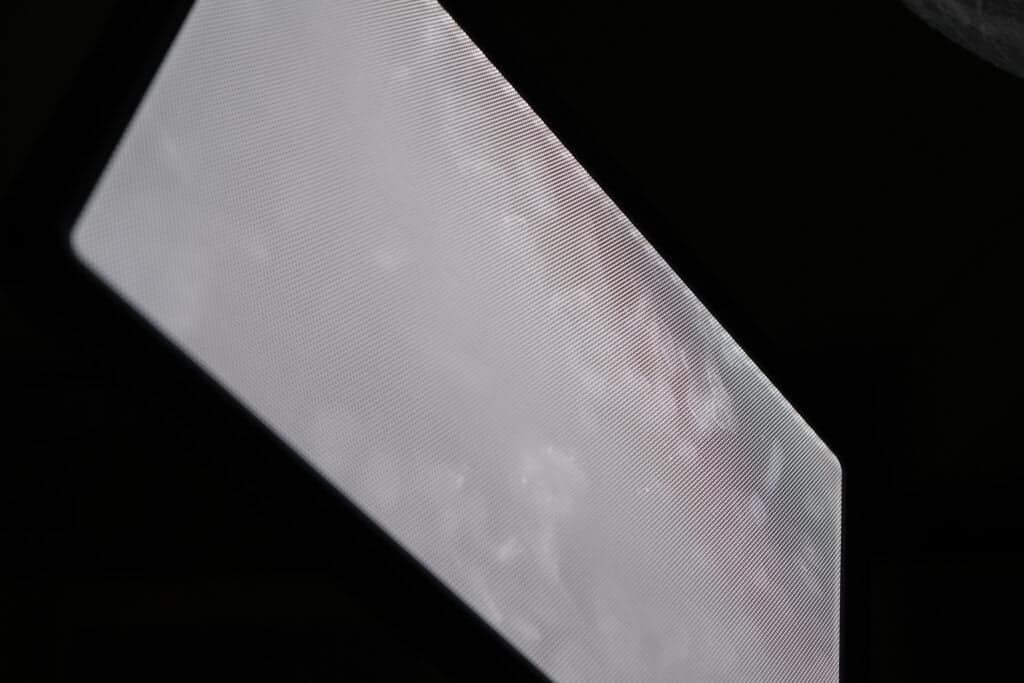
But on the Godox LEDP260C, only half of the available LEDs are used when it is set to daylight. It still is around 70% brighter than my Aputure Amaran AL-F7, but that number could have been even higher were it to use a combination of warm and cool and not warm and daylight LEDs. Another downside, due to the choice of LEDs, is that the Godox LEDP260C can’t provide cold light. Despite that, at 2200 LUX when set to 5600K it is plenty bright enough for my small space and should do for pretty much any amateur YouTube production such as mine.
Diffusion included
On a more positive note, you don’t need any diffusion layers or light domes when using this light. The diffusion layer is part of the light, and it’s fantastic. You won’t be able to make out a single LED. I think the way Godox has done this is by building this thing just like and LCD panel, where the LEDs are located around the panel in the bezel and manage to evenly light a display.
Two power options are better than one
At peak brightness, the Godox LEDP260C is rated at 30 W and you can either use the included wall adapter or use two Sony NP-F batteries to power it. And you have to use two charged batteries, you can’t use just a single battery.
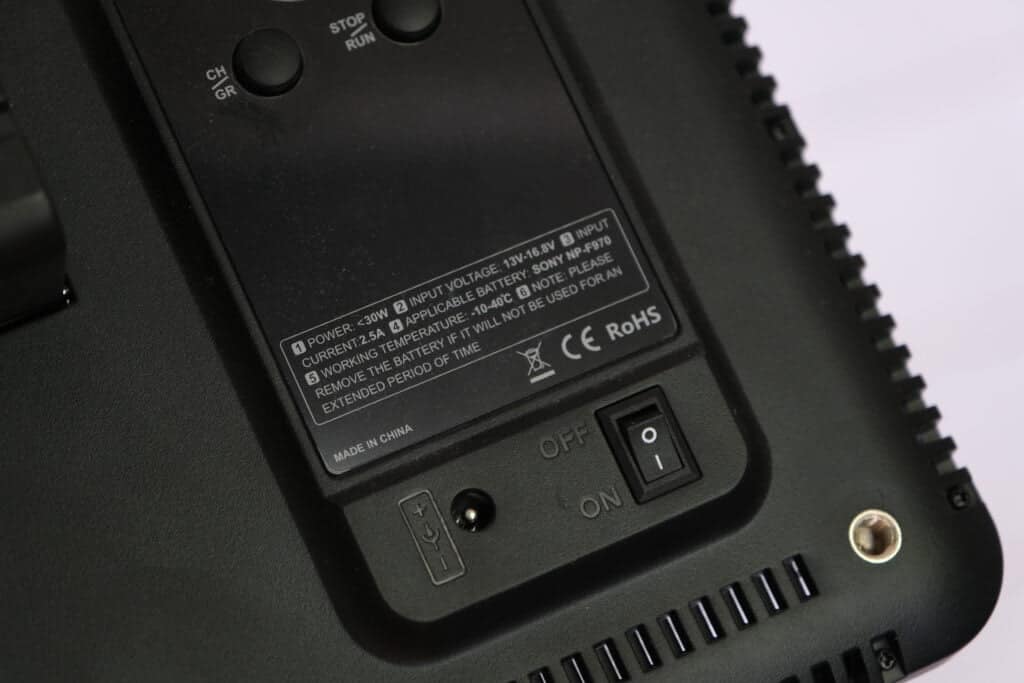
I read someone somewhere complaining that the Godox LEDP260C would only ever drain one battery, but only worked when two batteries were attached. That is most certainly not the case. The panel will evenly drain both batteries at the same time. The panel needs around 14V and a single Sony NP-F battery only provides 7.2V, so it would be impossible for a single battery to power the whole thing.
A cheap battery mount
The battery mount on the back is another place where Godox managed to save a few pennies. The batteries don’t snap or click into place, you just have to mush them in there and hope you’ve done everything correctly. This mount has unfortunately led to me dropping a battery. Luckily, it survived and did not burn my house down.

Godox LEDP260C battery life
I’ve not done any tests on the battery life, but I did run through a few calculations. One NP-F750 battery has a capacity of around 31 watt hours, so two will provide about 62. If we divide that by the 30W the LED260C needs, we’re left with about two hours of runtime on a single charge.
Two NP-F970 batteries should get you around 3 hours in total, and the smaller NP-F550 batteries will last less than an hour. I’d definitely recommend at least a pair of NP-F750. Having the smaller batteries would mean turning the light off when not in use, to conserve power.
Nothing more than plastic on the Godox LEDP260C
I’ve already mentioned that this light is exceptionally cheap. You’ll find it for $90 which is less than the smaller and less powerful Aputure AL-F7. But you definitely do get what you pay for. The whole body and the panel itself is made of plastic. That’s an issue if you want to take this light anywhere. My recommendation is to just not do it. If you need a portable light, this one is not for you. Especially the plastic on the panel is extremely soft, and I once carried this thing in my bag and already there are scuff marks and scratches on it.
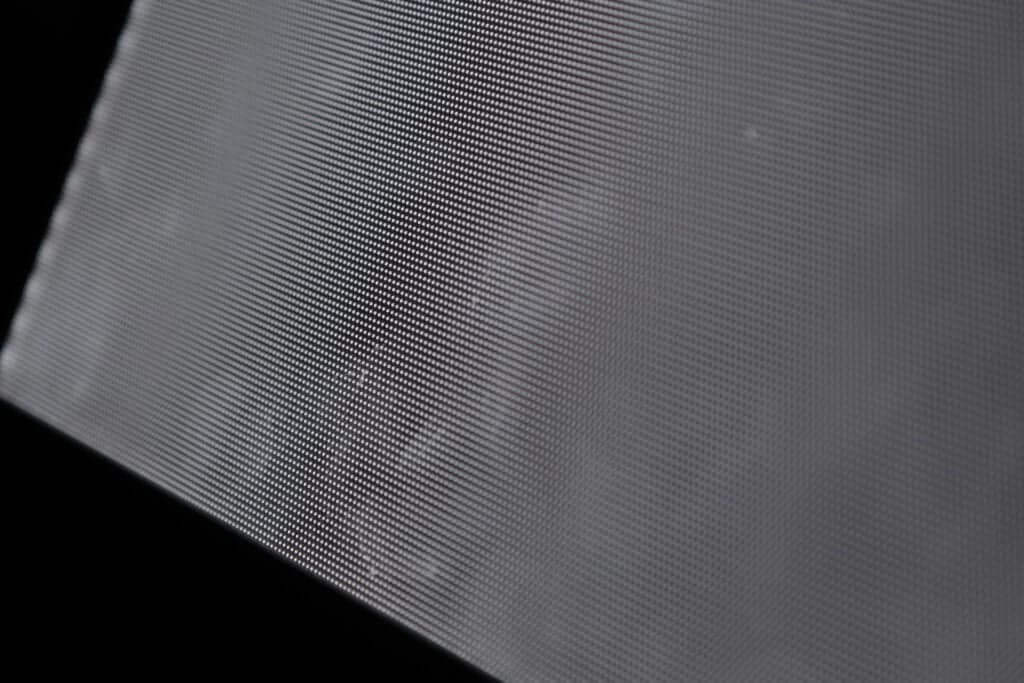
The plastic construction has another downside in that it expands when the LEDs start heating it up. While expanding you will hear almost a cracking sound. The first time it happened I thought it must be dying. Well, as it appears that is just something the Godox LEDP260C does. It’s not something that will ruin a recording, but you should be aware of it.
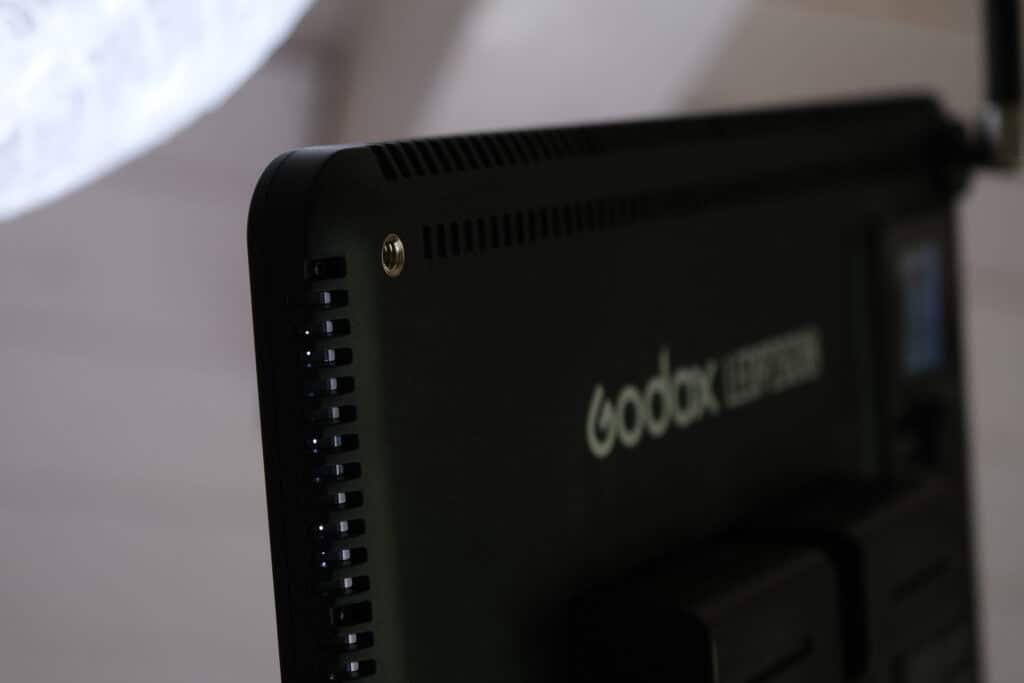
Other than that, the LEDP260C is completely silent. There are no fans needed and as the vents on each side seem to suffice and there’s no electronic buzzing or whining to be heard.
Using plastic, of course, isn’t all bad and the big advantage is that this panel is not only extremely thin but weighs less than a kilogram.
The Godox LEDP260C wins purely based on price
Despite the negativity, I don’t want you to think I’m hating on this light. It might sound like I only have complaints. And that’s because objectively it just isn’t the best light out there, and I’m attempting to be as objective as possible. But everything I’ve been saying is offset by the fact that it is cheap. Very cheap. And for my setup I don’t need much more. Also consider that you don’t need any extras to diffuse or focus the light. The panel really is the only thing you need to buy. It even comes with a power supply.
Sure, the Godox LEDP260C is not what I would go for if money were no object, but the price is what makes this light so attractive. And it works perfectly enough as long as you are aware of its limitations. If you’re sitting at a desk and talking about stuff you don’t really need much more. The light quality isn’t the best but at a CRI of 95+ it’s more than decent.
Weird mounting options
With that said, let’s move on to how the panel mounts on to a light stand. You do thankfully get a little handle to attach it to just about any light stand, but it won’t exactly fill you with confidence. The mounting parts are metal, but it does wobble and move all over the place.
The most confusing thing about this light is that there are threads for a tripod mount in each corner of the backside. I’ve not found anyone with an explanation of what to do with them. Yes, you can get L brackets that will attach to it, but you wouldn’t want to mount it in just one corner, would you? It would have been far more useful to have them on the outside edges, allowing you to skip the handle and attach it more securely and in any position.
Godox LEDP260C remote
One area where they didn’t skimp on is the remote. You can control everything from the backside of the panel, but it also comes with a handy little IR remote. You can configure the panel to be in one of 6 groups across 16 channels. That means that you can actually control multiple lights with just a single remote. Godox obviously envisions you to have multiple panels, but I only have the one, so I can’t actually test any of that. Still, it’s definitely a nice-to-have.
Godox LEDP260C: Conclusion
That’s pretty much all there is to say on the Godox LEDP260C in this review. For me, it’s fine. If your work is in any ways similar to mine, talking while sitting somewhere, it will be fine for you too. Just don’t expect too much from such a cheap light. You can’t hot-swap the batteries, it gets scratched easily, and it doesn’t solidly attach to a light stand. If that’s fine for you, go for it, you won’t find anything cheaper.
I don’t think this panel is exclusively for small-time YouTubers. I can definitely see it being used by streamers due to its slim design. But you will have to figure out a way to mount it on a wall as the back isn’t completely flat and the barrel adapter is also located there and will stick out.
You should definitely consider the Aputure Amaran 100D as an alternative, though. It does cost about double but has three times the power. It’s also a COB light, so you won’t get any weird shadows or lines on your person. The Bowens mount allows you to attach a huge assortment of diffusers, but you will also have to place it further away from yourself.

